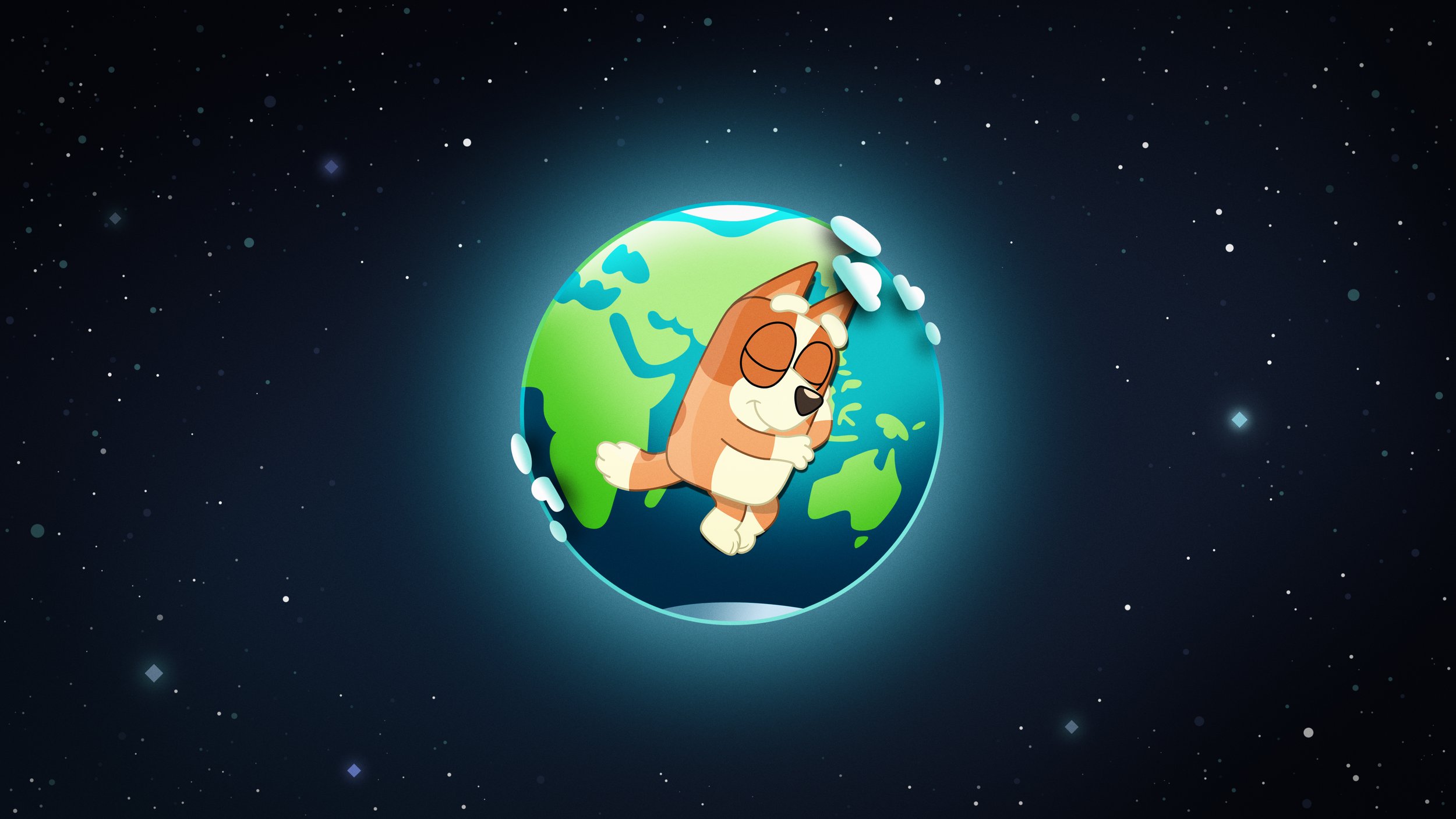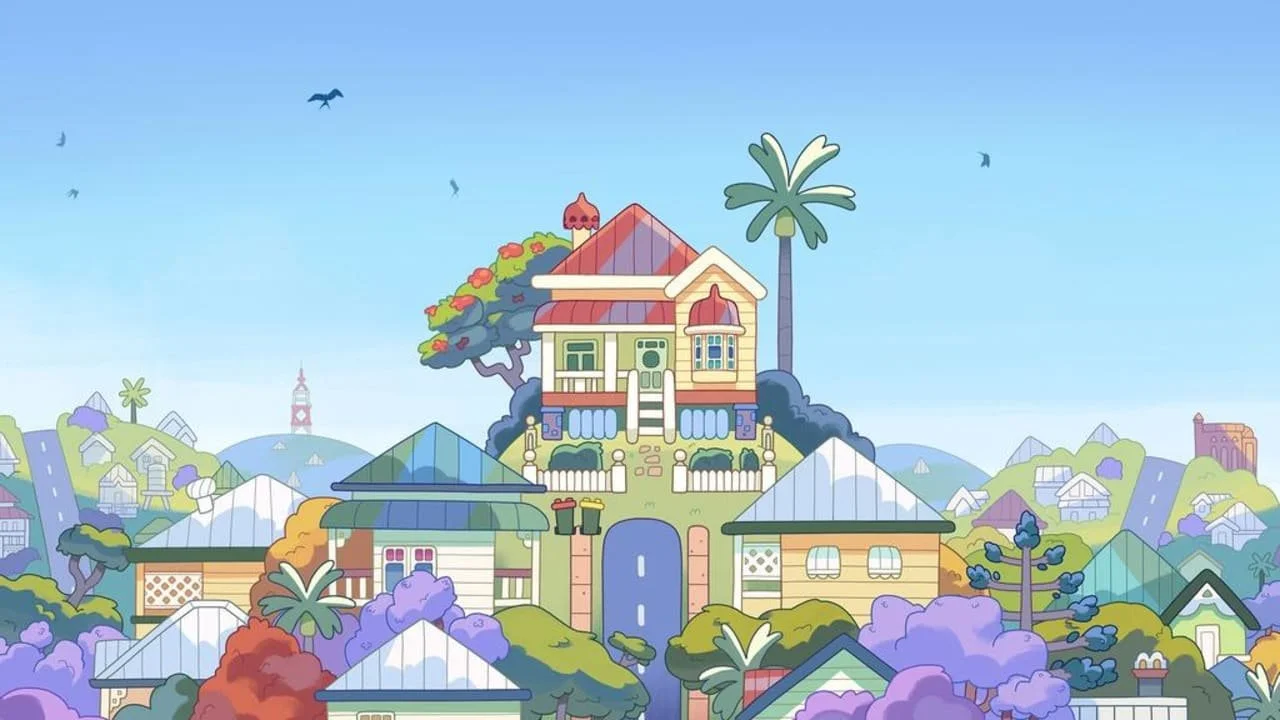Wackadoo! Why Bluey is the best advert for brand Australia
With over 250 million views on Disney+ in the US alone, Bluey is a global phenomenon, with fans of all ages tuning in to watch the adventures of the Heeler family. But beyond each endearing seven-minute episode is an enduring example of soft power, showcasing the best of Australia to the world.
Written by Ryan Tym
BLUEY™ and character logo™ and © Ludo Studio. Licensed by BBC Studios Distribution Ltd.
Self-styled as ‘The greatest little show on Earth’, Lantern’s Founder and Director, Ryan Tym, unpacks what makes the show special, how it’s delivered for brand Australia, and how it can inform destination branding around the world.
It celebrates an authentic, Aussie way of life
One of the things that makes Bluey so appealing is its relatable characters and stories, which are inspired by show creator Joe Brumm’s own experiences as a father of two young daughters. Bluey, Bingo, Bandit, and Chilli are all flawed but loveable individuals who navigate the challenges of everyday life with humour, kindness, and creativity. Like many Aussies themselves, the stories the show tells feel genuine, heartwarming and funny – but they also deal with complex topics such as grief, anxiety, and sibling rivalry in a sensitive and skillful way. The show’s storytelling captures an authentic portrayal of family dynamics and celebrates the down-to-earth, Australian way of life. It’s a love letter to the nation, celebrating many of the country’s traditions and customs, such as playing backyard cricket, going to the beach, and having barbecues. This is a show that celebrates Australia’s people, its places, and its culture.
It captures the spirit of a suburb – and a nation
Set in the family-friendly Brisbane suburb of Wynnum, the show’s creators have gone to great lengths to capture the unique spirit and culture of the city – and Australia. The characters reflect the nature of an Aussie neighbourhood – friendly, laid-back, and filled with good humour. The family’s home is like a character in its own right – the iconic Queenslander is the setting for many Bluey adventures. This is particularly true during Season 2, as creator Joe Brumm and his family were in lockdown themselves, which translated to more home-based storylines in the show. The Heeler house, like most Queenslanders, has the feeling of no boundaries between the inside and outside. The playroom leads out to the deck, there’s space under the house and the backyard becomes a jungle, ready to explore.
Beyond the neighbourhood of Wynnnum, the show features many of Brisbane’s lesser known parks, schools and playgrounds, alongside its iconic areas – capturing them in a way that’s not only beautifully animated, but showcases the best of the city as a family destination. Locations include South Bank Parklands (from the episode ‘Ice Cream’) and The Queen Street Mall, City Hall and the Botanical Gardens (all featured in the episode ‘Dance Mode’). You can get an ice cream at Bluey’s favourite stand, or sit on Bingo’s favourite bench. Fans of the show could, at one point, even stay in the Heeler house on Airbnb.
The show also celebrates the diversity of Brisbane's population. Its characters are from all walks of life, and they reflect the city's multicultural heritage. Indeed, the cast reflects the diversity of Australian society – and the show has received praise for its inclusive representation and positive portrayal of Aboriginal and Torres Strait Islander culture.
It showcases life beyond Sydney
Brisbane might not be the first city that comes to mind when people think of Australia – but that adds to the show’s charm. By showcasing life outside Sydney and Melbourne, Bluey's adventures have transported viewers to some of Queensland’s best-loved and lesser-known destinations.
In the episode ‘Camping’, for example, Bluey and her family go camping in the Outback. They learn about Aboriginal culture and explore the natural beauty of the Australian bush. In ‘Fairytale’ the show explores Mission Beach and the nostalgia of family holidays in the 1980s – spent by the coast and explored on two-wheels. No screens, no smart watches. Just family time.
The Sunshine Coast, The Glasshouse Mountains,The Gold Coast and the Great Barrier Reef all feature in the show. And by heroring the beautiful beaches of the city, the lush rainforests of the territory, and the unique wildlife that calls Australia home,Bluey has helped to put Brisbane and Queensland on the map – and it’s shown the world that Australia has much more to offer than Sydney and Melbourne.
It crosses generations – and borders
Bluey has been translated into 18 languages and is available to stream in over 60 countries. It’s had 250 million views on Disney+ in the United States alone and has even been credited with giving some American schoolchildren an Aussie twang. It’s a global phenomenon.
That popularity is due in part to its universal appeal. The show's stories transcend ages, borders and backgrounds. It’s more than just a kids' show – it promotes a lifestyle and mindset that’s aspirational to many people. The Heeler family believes in spending time together outdoors, being creative, and having fun. They’re supportive and understanding towards each other, even when they make mistakes. These values of family, creativity, and fun resonate with people of all ages around the world and the show has inspired many people to adopt a more carefree and playful approach to life. But it also celebrates the everyday – Bluey’s family live in a regular house in a regular suburb. They go to the local park, visit the beach, and have barbies in their backyard. It’s a level of realism that makes Bluey feel relatable to viewers all over the world.
Takeaways to shape your place brand
Bluey may be a children’s TV show, but it’s made the world fall in love with Australia again. Thanks to its powerful storytelling, relatable characters and aspirational lifestyle, it has something to teach us all about developing a successful place brand. Here are three key takeaways to help shape your own stories:
1. Stay authentic, know your audience, make it emotional
The series is a success because it tells authentic stories about Australian life. The characters are relatable, the storylines are heartwarming, and the setting is realistic. But it’s the emotion of the show that creates its most memorable moments. It will make you laugh and cry. It knows its audience, and it plays to their pain points, no matter their age. When developing a nation brand, it’s important to focus on telling stories that reflect the real lives of your citizens, but this needs to be done it in a way that’s relatable to your audience and doesn’t shy away from making them smile.
2. Highlight your strengths, embrace your weaknesses
The show captures the best of Australia: its people, its culture, and its landscapes. It highlights Australia's friendly and laid-back locals, its diverse culture, and its stunning natural beauty.
But it’s not afraid to show its characters flaws – embracing them and celebrating them.
When developing a nation brand it’s important to highlight your country's true spirit – playing to strengths but acknowledging weaknesses and – when the time is right – making them the hero of your story.
3. Keep it aspirational, never forget the aesthetics
Bluey promotes a lifestyle and mindset that people find aspirational. The show's characters are active, healthy, and have a positive outlook on life. They are also close to their families and friends. When developing a nation brand, it is important to create a vision for your country that’s both aspirational and achievable.
But never forget your visual identity. One of the keys to Bluey’s success is visual character. The aesthetics, illustration style and animation is rich, colourful and often dream-like in quality. It engages audiences and when combined with authentic storytelling, captures Australia’s brand attitude perfectly.
BLUEY™ and character logo™ and © Ludo Studio. Licensed by BBC Studios Distribution Ltd.








